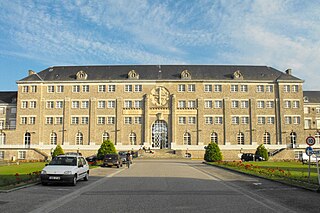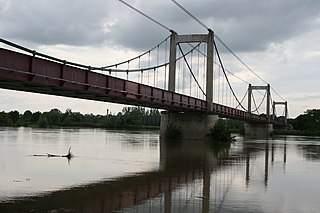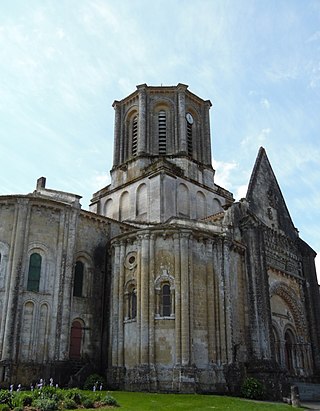
Grasse is the only subprefecture of the Alpes-Maritimes department in the Provence-Alpes-Côte-d'Azur region on the French Riviera. In 2017, the commune had a population of 50,396.

Arques is a commune in the Pas-de-Calais department in northern France, bordering Saint-Omer.
RHS Britain in Bloom is the largest horticultural campaign in the United Kingdom. It was first held in 1963, initiated by the British Tourist Board based on the example set by Fleurissement de France, which since 1959 has promoted the annual Concours des villes et villages fleuris. It has been organised by the Royal Horticultural Society (RHS) since 2002.

Saint-Vaast-la-Hougue is a commune in the Manche department in Normandy in north-western France.

Mimizan is a commune in the Landes department in Nouvelle-Aquitaine in south-western France. There are two separate districts of the town: Mimizan-Bourg and Mimizan-Plage (resort).

The Entente Florale Europe is an international horticultural competition established to recognise municipalities and villages in Europe for excellence in horticultural displays. Trophies are presented annually by tourist boards and horticultural societies of European countries. There are three categories:

Bourg-de-Péage is a commune in the Drôme department in the region of Auvergne-Rhône-Alpes, France. Its inhabitants are called Péageois; in 2017, the population was 10,205.

Saint-Jean-de-Maurienne is a subprefecture of the Savoie department, in the region of Auvergne-Rhône-Alpes, Southeastern France. In 2018, it had a population of 7,683.

Tonnerre is a commune in the Yonne department in Bourgogne-Franche-Comté in north-central France.

Samoëns is a commune in the Haute-Savoie department in the Auvergne-Rhône-Alpes region in south-eastern France. It is the principal commune for the canton which bears its name. The town of Samoëns is located in the Vallée du Giffre in the French Alps.

Loubressac is a commune in the Lot department in south-western France. It is also in the Causse de Gramat, the largest and wildest of the four Causses du Quercy. Its inhabitants are called Loubressacois or Loubressacoises.

Le Mesnil-le-Roi is a commune in the Yvelines department in the Île-de-France region in north-central France. It is about 8 km (5 mi) from Saint-Germain-en-Laye.

La Vraie-Croix is a commune in the Morbihan department in Brittany in north-western France. Its inhabitants are called Langroëziens after the Breton name for the commune.

Chambon is a commune in the Cher department in the Centre-Val de Loire region of France.

Égletons is a commune in the Corrèze department in south-western France.

Saint-Quentin-Fallavier is a commune in the Isère department, and the Auvergne-Rhône-Alpes region, in southeastern France.

Bonny-sur-Loire is a commune in the Loiret department of the Centre-Val de Loire region of north-central France.
Autretot is a former commune in the Seine-Maritime department in the Normandy region in northern France. On 1 January 2019, it was merged into the new commune Les Hauts-de-Caux.

Vouvant is a commune in the department of Vendée, in the Pays de la Loire region in western France.

Abbeville is a railway station serving the town of Abbeville, Somme department, in Hauts-de-France, northern France. It is on the Longueau–Boulogne railway and is the terminus of the Abbeville–Eu railway. It is served principally by TER Hauts-de-France trains.






















